Duluthians visit “Art and Healing”
It was nearly three hours from the Twin Ports to the Minneapolis Institute of Art in South Minneapolis to visit the opening of “Art and Healing: In the Moment.” But Duluth is participating in a national dialogue on race; it has for decades, since we started to acknowledge our own history of racial violence and our current racial inequalities. Participating in a national conversation means listening to what others have to say, about their experiences, too.
“Art and Healing: In the Moment” is a special exhibit at the Minneapolis Institute of Art featuring work by community artists responding to Philando Castile’s shooting death by a police officer on July 6, 2016. The creation of this exhibit began when many people — friends and strangers alike — made and brought Castile’s mother, Ms. Valerie Castile, many works of art depicting Castile himself or expressing their grief, love, or solidarity with his family. The collection grew so big that after a year, Ms. Castile called the museum, thinking it might be interested in showing some of the work.
It was. In the end, a community committee chose 15 works of various genres, including sculpture, painting, drawing, textiles, videos, photography, and protest posters. “Art and Healing” is housed in a small side gallery on the right of the main Mia foyer. The room itself is nondescript, but the works and the didactic panels that explain the circumstances of the art are illuminating and even surprising.

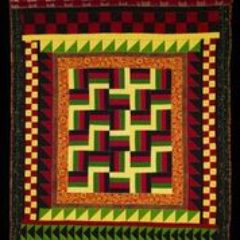
A favorite piece was a painting called Philando Castile, acrylic on canvas, by Mariah Pratt. This piece reminded us of iconic portraits of celebrities — think Tupac or Princess Di. We do not mean this in a belittling way. It is colorful and earnest and honest, a statement that Philando ought to be remembered as a healthy and happy man.
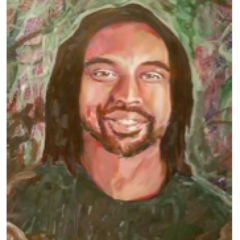
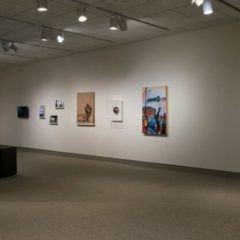
Another standout is a quilt made by Aisha Masakella, In Remembrance of the Life of Philando Castile, 2016-2017, which took a year to create. Its quality in stitching and detail rivals the most gorgeous quilts we’ve seen, and the choices in patterns and colors suggest an Afro-centric solidarity. The front alternates red, yellow, green, and black squares, while the back, folded over for display, is a starry purple field with abstract, African-esque female figures. Much less explicit than the Mariah Pratt Philando Castile, the quilt evokes a feeling of history and pride in black culture.
Toward the end, Sarah White’s Raising Black Joy, 2016, shows her 4-year-old daughter dancing in the grass. Barefoot, wearing shorts, a T-shirt, and pig-tails, the girl is adorable, alternating “real” dance moves and the type of hopping/dancing that little ones do. Wear the headphones attached to the wall or not; the music gives some context, but is not strictly necessary to appreciate White’s message. This is a work we can, in a small way, share with you here, via the artist’s YouTube page:
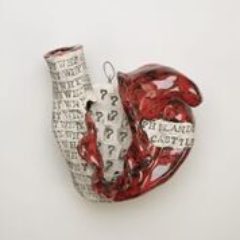
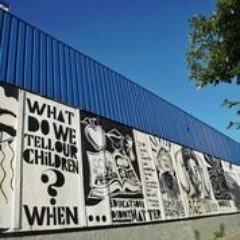
Works like Angie Renee’s Why could not be contained by the wall. As the ceramic heart is torn asunder by unanswered questions, so are our hearts. And as the heart is cracked open, so is the will to act, to protest, as recorded in I.am.Mural, a video by Xiaolu Wong, integrating mural photography by Ryan Stopera. The mural was organized by Arianna Genis and Ashley Fairbanks and painted by Jeremiah Bey, Chaka Mkali, Jordan Hamilton, Andres Guzman, Leilani Mendoza, Donald Thomas, Nellie Pierce, Olivia Levins Holden, Lamia Abukhadra, and Alizarin Menninga-Fong. It was, then, a community’s energy turned into public action.
It’s difficult to know how to contextualize this exhibit in the comprehensive arts mission of the museum. The staff, when pushed about how this fits into the larger programming, have noted “there’s a 500,000-square–foot building here,” and so there is space for innovative exhibits that respond to community. We think about the innovative programming at our own Tweed and Duluth Art Institute, and we know that Ken Bloom, Annie Dugan, Christina Woods approach their work with the same spirit. There are fewer square feet, but there is always space for exhibits that respond to community.
Still: it was hard to know how to respond to this exhibit, something we didn’t feel until we experienced the exhibit alongside a group viewing it differently than we were. During our half-hour in the exhibit, a photography instructor was giving a lecture to six or so students in the exhibit room, treating it like any other room in the museum, with lessons for technique. There may be visitors for whom the disregard for the subject’s solemnity would be more than simply annoying.
Should a visitor need some privacy, however, there is a reflection room across the foyer.
In “Art and Healing,” Minnesotans are both speaking out in the wake of Castile’s death and speaking to each other. Go and listen. The exhibit is open through July 29 and admission is free.
–Jamie White Farnham with David Beard
Recommended Links:
Leave a Comment
Only registered members can post a comment , Login / Register Here



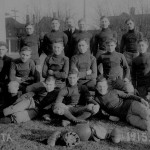
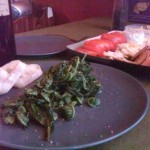









No Comments